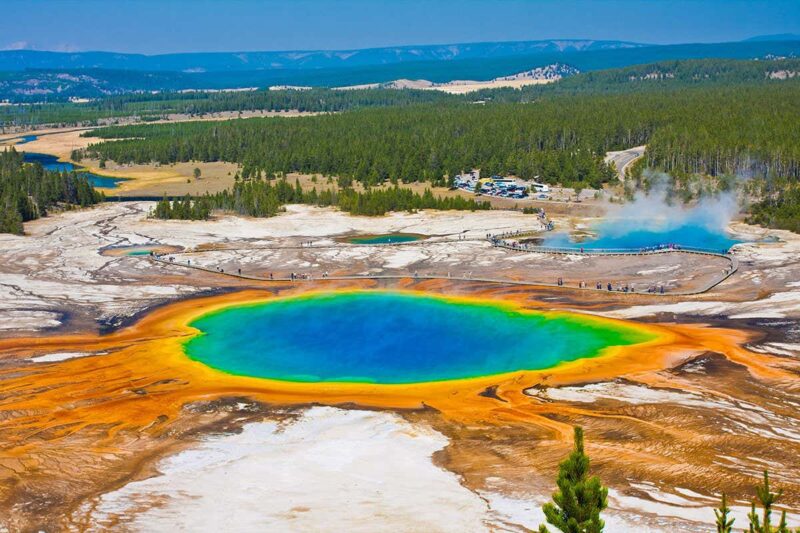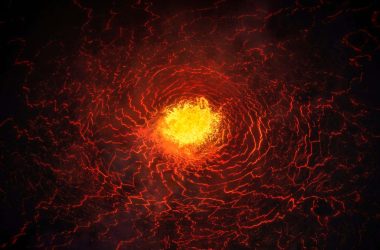The Grand Prismatic Spring in Yellowstone National Park
Lorcel/Shutterstock
A recent study has revealed that the magma reservoir underneath the Yellowstone Caldera contains almost double the amount of molten rock than originally estimated. However, despite this increase, it does not raise the risk of an eruption at Yellowstone.
Located in north-western Wyoming, the Yellowstone Caldera is one of the largest volcanoes in the world. Over the past 2.1 million years, it has experienced three devastating eruptions that covered North America in ash, as well as several smaller eruptions within the caldera, the most recent of which occurred 70,000 years ago. Scientists vigilantly monitor Yellowstone for any signs of an impending eruption, such as ground deformation or earthquakes.
Eruptions are fueled by magma from two enormous reservoirs beneath the caldera. Previously seen as simply “big tanks” of magma, these reservoirs are actually composed of a complex mixture of melted rock and crystals, known as a “crystal mush,” as described by Ross Maguire from the University of Illinois Urbana-Champaign. The composition of this mush plays a role in determining the volcano’s likelihood of erupting, with a higher proportion of melted rock making the magma more prone to mobilization.
By analyzing seismic data collected over the past two decades and utilizing advanced three-dimensional modeling techniques, Maguire and his team were able to estimate the amount of melted rock in the shallower magma reservoir. They found that, on average, the reservoir contains between 16 to 20 percent melted rock, compared to the previous estimate of around 9 percent. This suggests that the reservoir holds approximately 1600 cubic kilometers of melted rock, nearly twice as much as the previous estimate of approximately 900 cubic kilometers.
Despite the increase, Maguire emphasizes that the proportion of melted rock is still well below the 35 to 50 percent threshold required for an eruption. He explains that Yellowstone can exist with a significant amount of melt without erupting for long periods of time.
Kari Cooper from the University of California, Davis, who provided commentary on the research, suggests that depending on the distribution of melted rock, there could be enough for a small eruption. However, she notes that this study demonstrates that there is not enough magma present for a catastrophic eruption.
Cooper describes this discovery as a significant advancement in understanding the geological makeup of Yellowstone.
Topics:








